Previously known as Webmaster Tools, Search Console is a free tool offered by Google to website owners to give insights into how Google crawls, indexes and ranks a particular website.It is a valuable tool for WordPress users and is probably the best free SEO tool for WordPress sites after SEOPress! In fact, you may obtain the best results by combining both, using SEOPress Pro to import Search Console data to the WordPress dashboard.
It is important for any website owner or creator to register a site with Google Search Console as it gives Google a way to contact a person who is responsible for a site if something goes wrong in Google’s crawling and indexing.This includes security issues such as a website being hacked or infected by a virus.
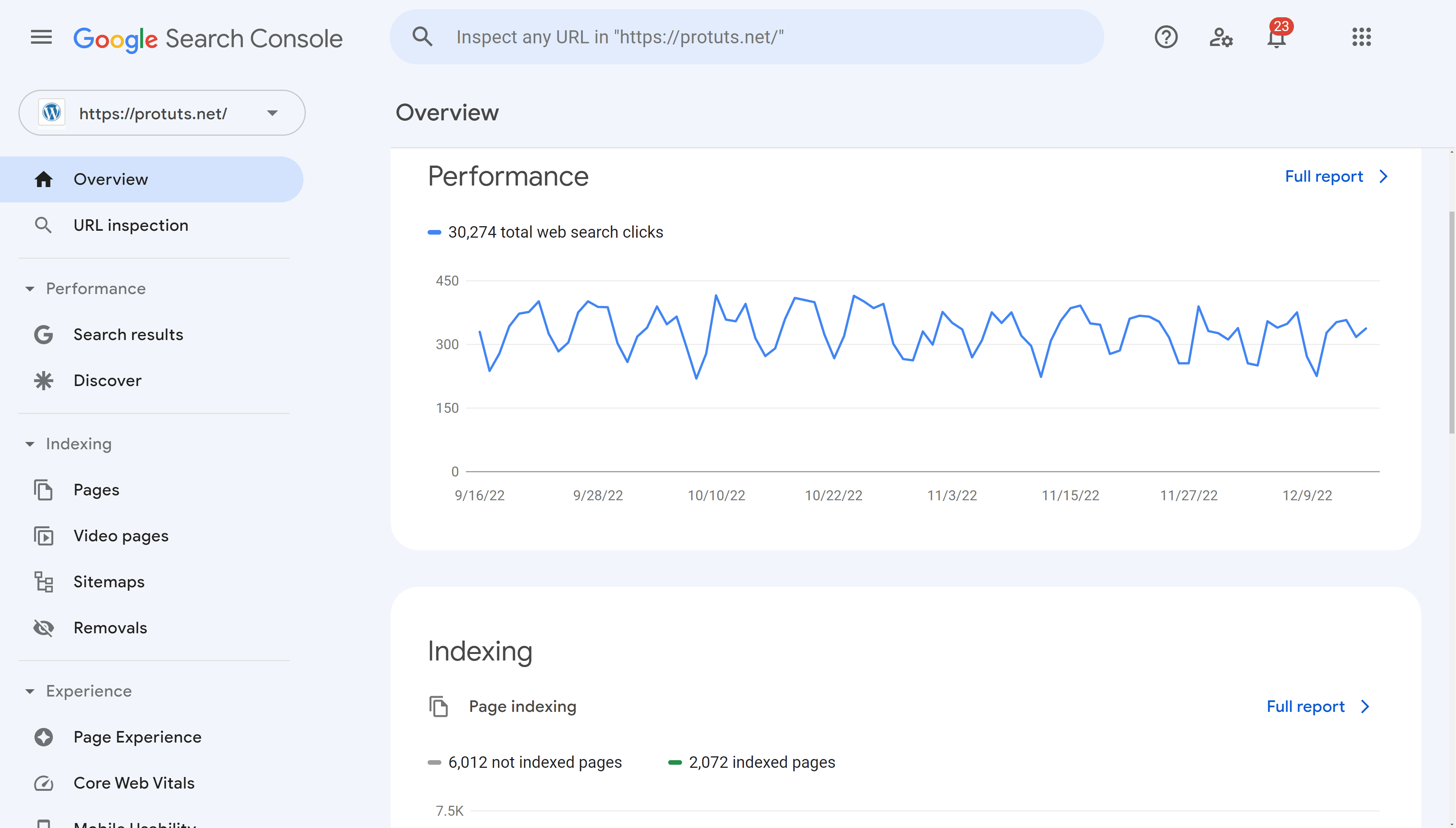
Creating a property in Google Search Console for a new website may also help push Google to start indexing a website.There are a lot of cases where new websites are not being indexed – and therefore not being ranked – by Google.You can also manually declare your Sitemap to make sure that Google quickly finds all the important pages and posts of your WordPress site.
See our article Getting your WordPress site indexed by Google for more information on what “indexing” means and how Google finds pages by crawling the web.In this article we explain that when you search Google you are not searching the web, but an index of the web created by Google, stored in data centers across the world.If you want to feature in Google’s results, you have to first make sure that you are in their index.Search Console will report on every URL it found on your site and tell you if it is indexed or not.

Google Search Console as an SEO tool
Beyond the importance of letting Google get in contact with you, Google Search Console can also be used as a free SEO tool that will help you identify keywords, track ranking, identify problems on your pages and see who links to your website.
These are features that you can find in many SEO tools, but in the case of Google Search Console, these features are all free and they are based on first-party data from Google.
Setting Up Google Search Console for WordPress
You will need a Google Account to use Google Search Console.This can be the same account you use for Google Analytics or other Google tools.To create your Search Console account and add your first property go to https://search.google.com/search-console/about and on the welcome screen, click Start now.
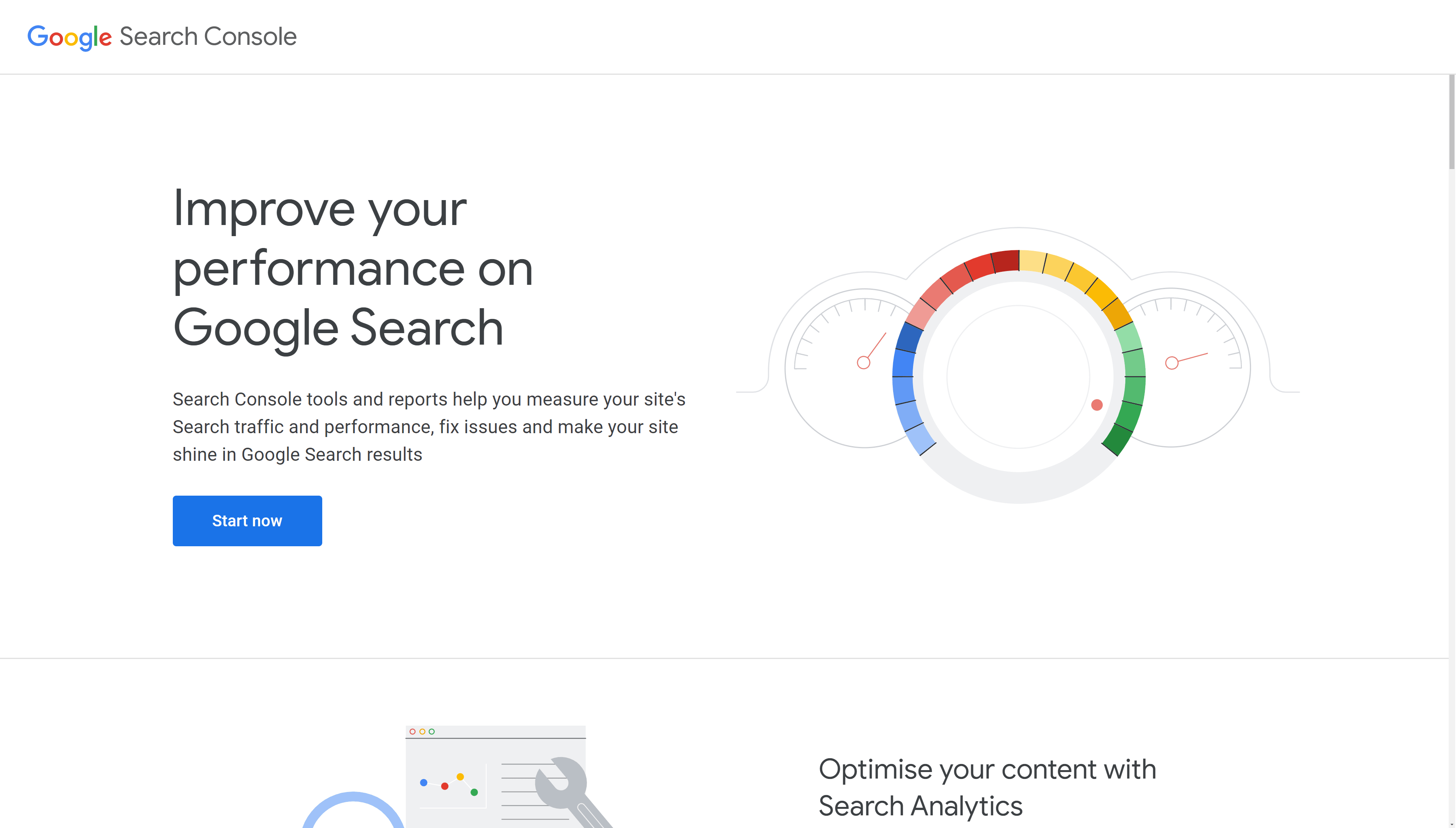
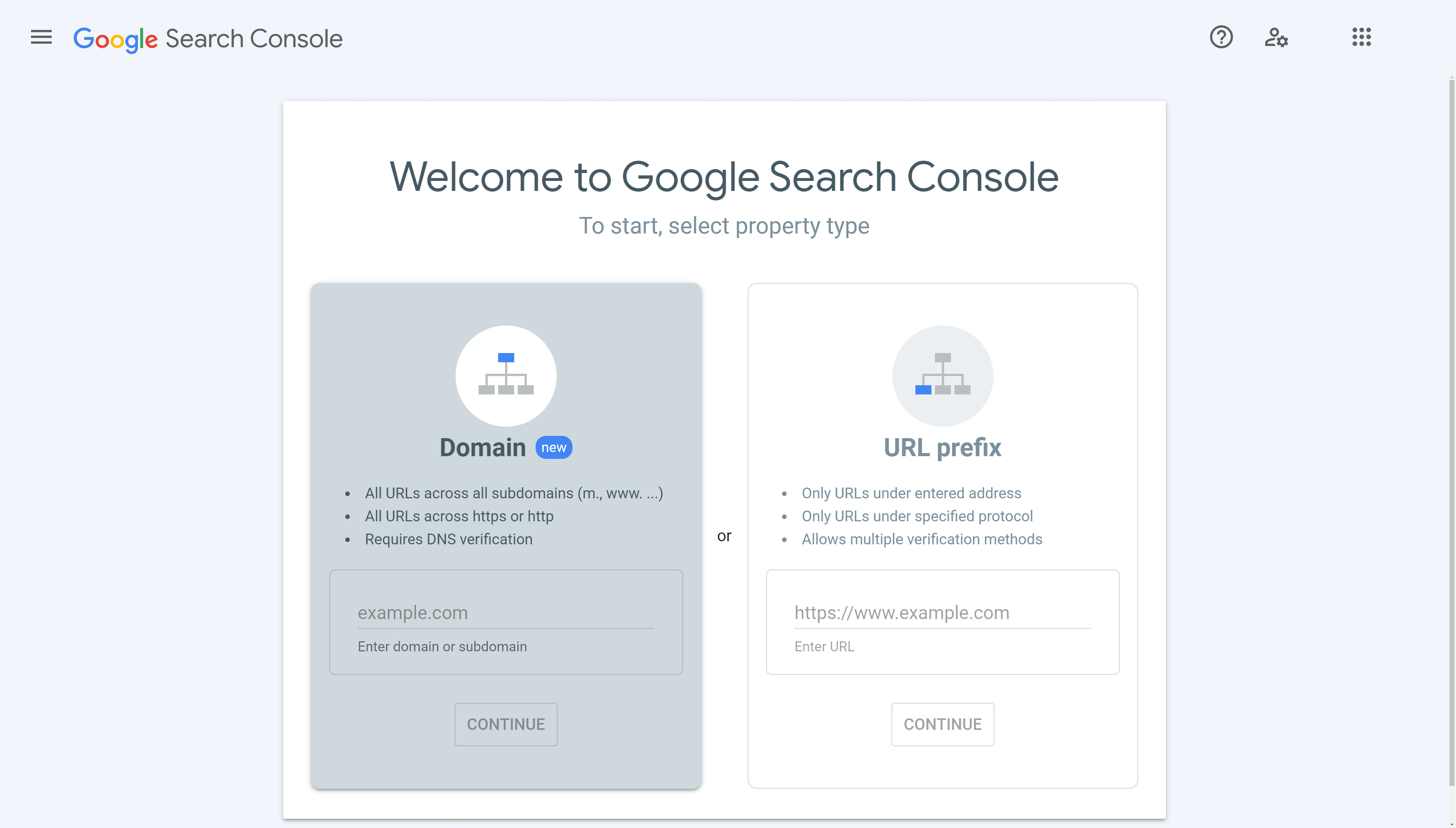
To start using Search Console, you need to add a property and prove that you have rights to administer the website.You can use the account linked to your domain name (for example seopress.org) to add DNS records to create a property linked to a domain.
To add a specific website (for example https://www.seopress.org/), you can use various methods to prove that you are the owner or creator of the website.These include copying a meta tag into the home page of your website.You can see how to add the meta tag to a WordPress site using SEOPress in our guide Add your site to Google (Search Console).
You can also prove ownership by transferring an HTML file provided by Google to the root directory your website (proving that you have access to FTP for example) or use your Google Analytics or Google Tag manager accounts.If you have sufficient rights in Google Analytics and Google Tag Manager then you will obtain access to Google Search Console without having to transfer a file or add a meta tag.
Once you have access to a property in Google Search Console, you can add other users and give them full or restricted access.You can also declare other users as owners.
Quick, guided tour of Search Console
Thanks to the website https://protuts.net/ build with WordPress and SEOPress plugins, we can give you this quick, guided tour of Google Search Console.In the following chapters, we will see how Protuts.net can use Google Search Console to find keywords, analyze SEO performance, submit a sitemap and troubleshoot indexing issues.
The overall organization of Google Search Console is seen in the left-hand sidebar.Depending on the content of your website, you may see more or fewer options than the screenshots below.
After the Overview link, you may have a Performance link or a Performance section with Search results, Discover and News links (Discover and News links appear only if your site has significant traffic from Google Discover or Google News).Other sections in the menu are Indexing, Experience, Shopping (only visible for ecommerce sites) Enhancements, Security & Manual Actions, Legacy tools and reports.Links and Settings are at the end of the side bar menu.
The Experience section contains links to reports on Page Experience, Core Web Vitals and Mobile Usability.The Enhancement section contains a report for each type of structured data schema found on your website.
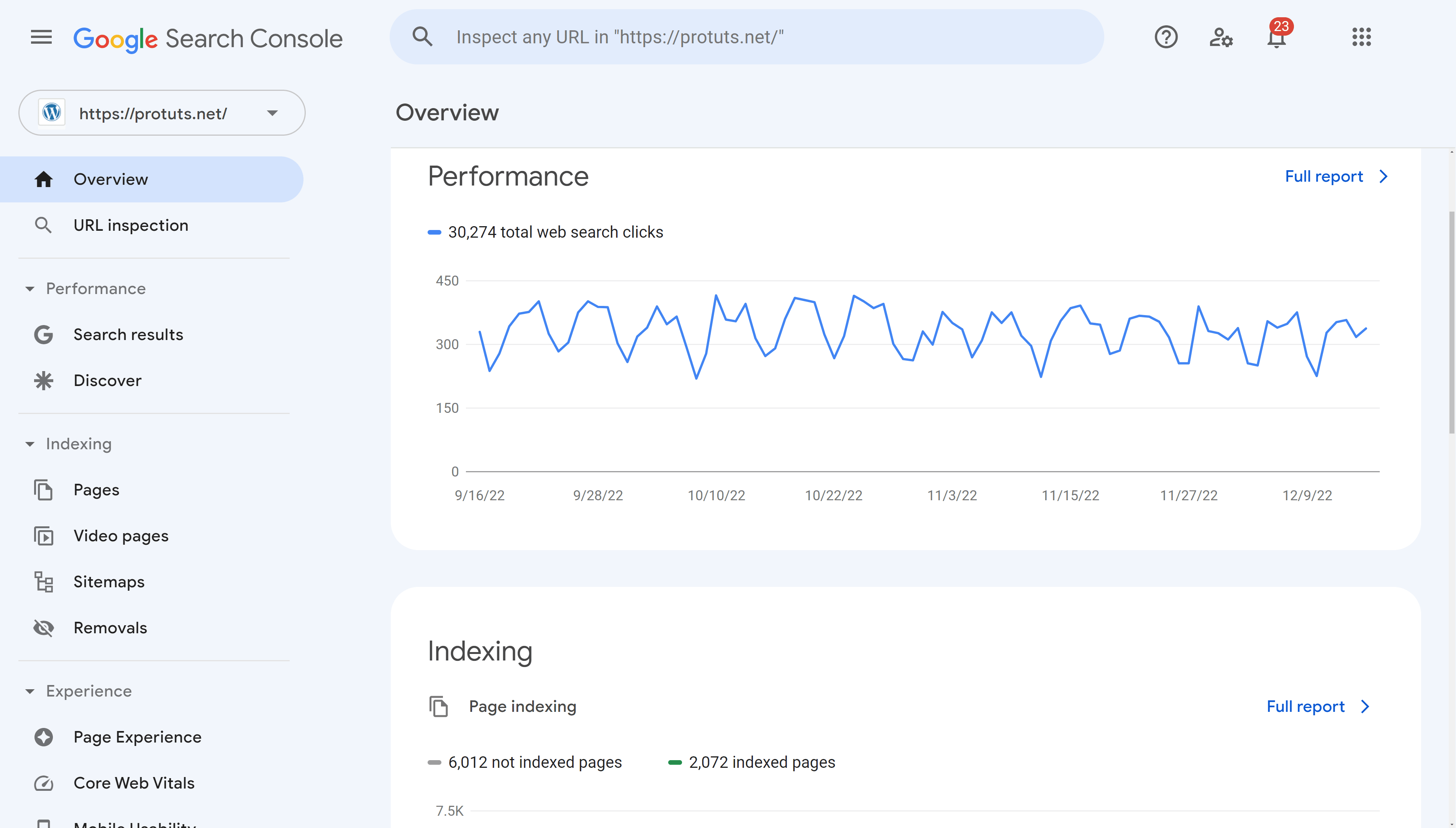
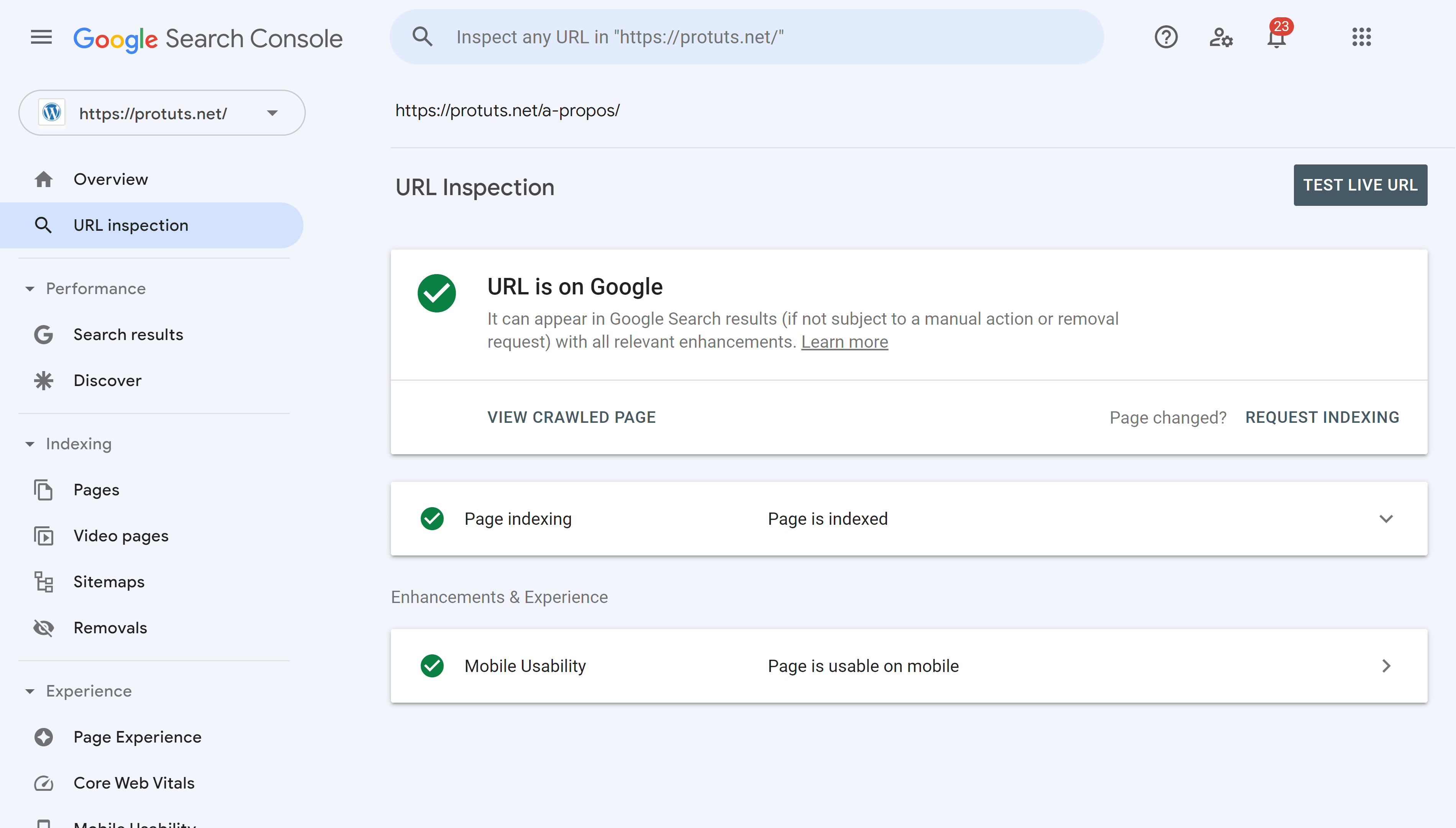
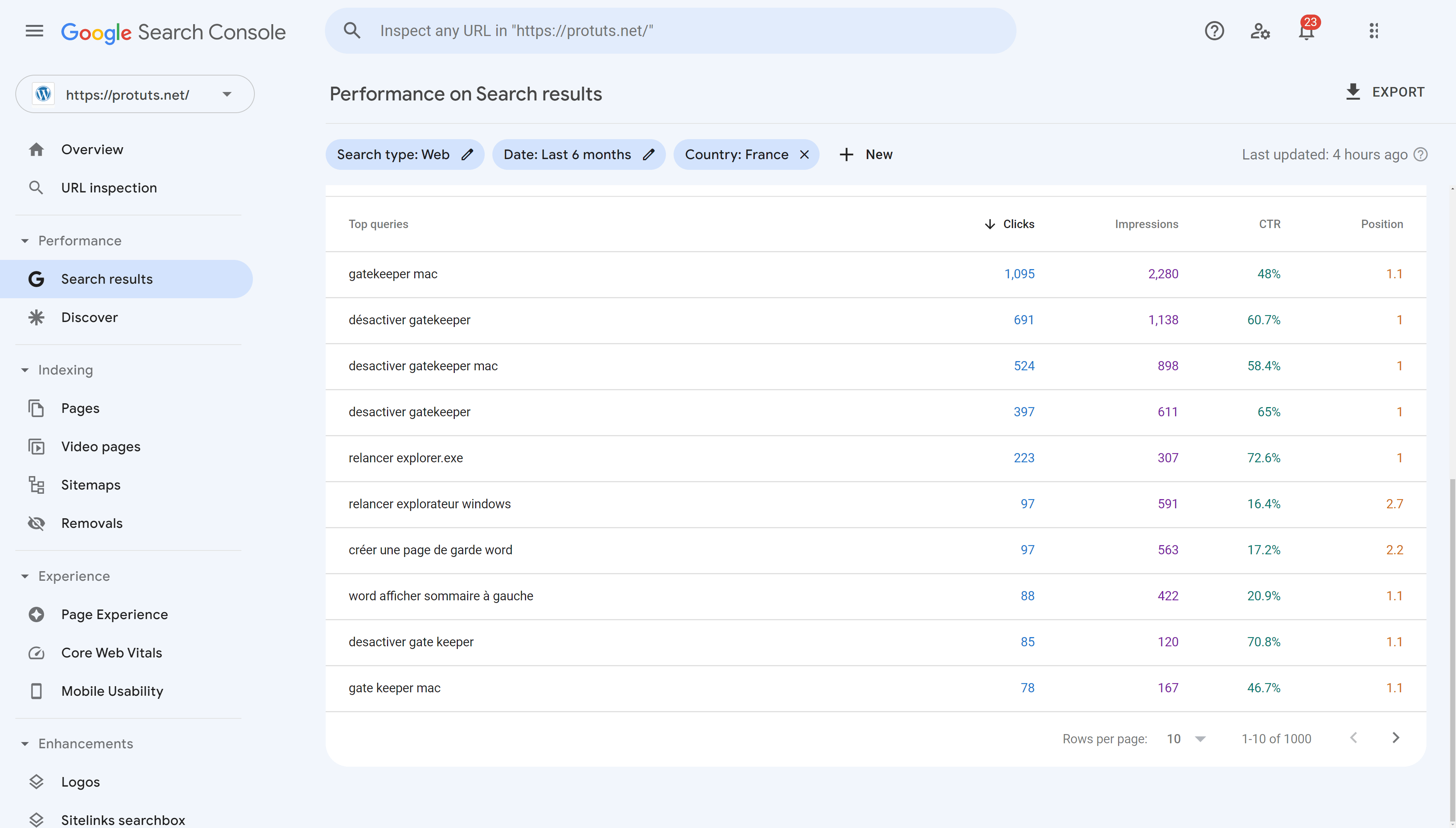
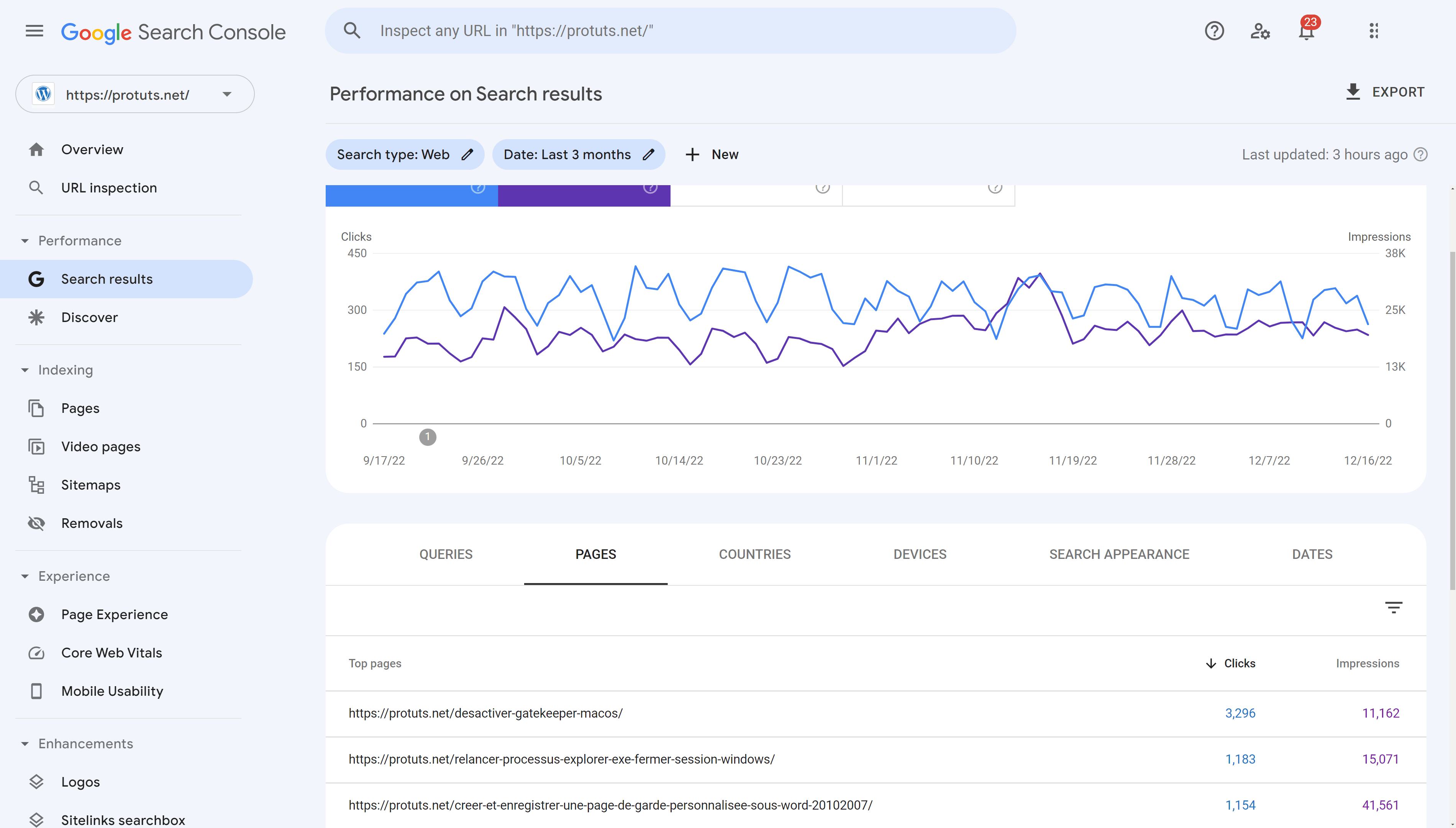
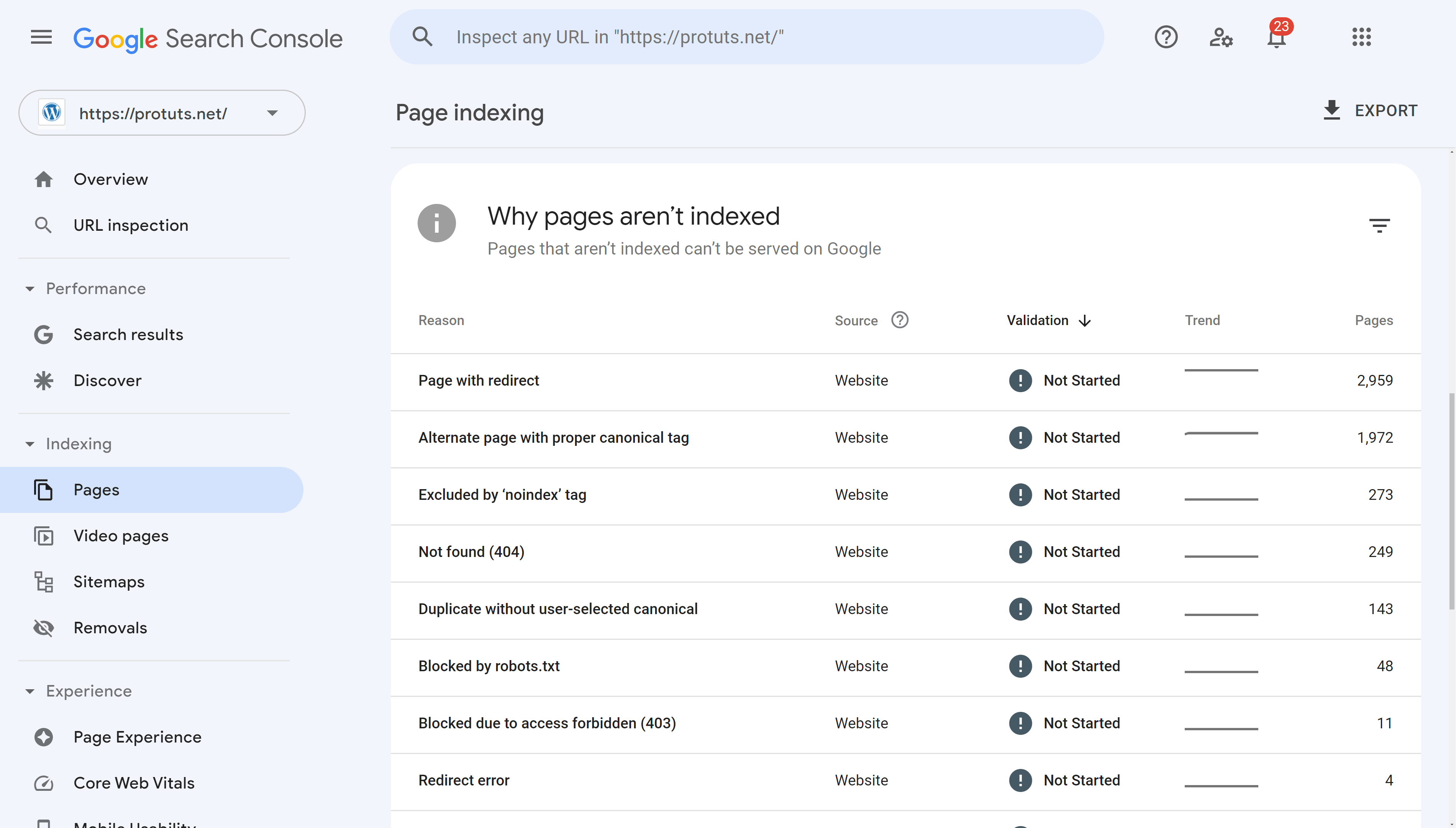
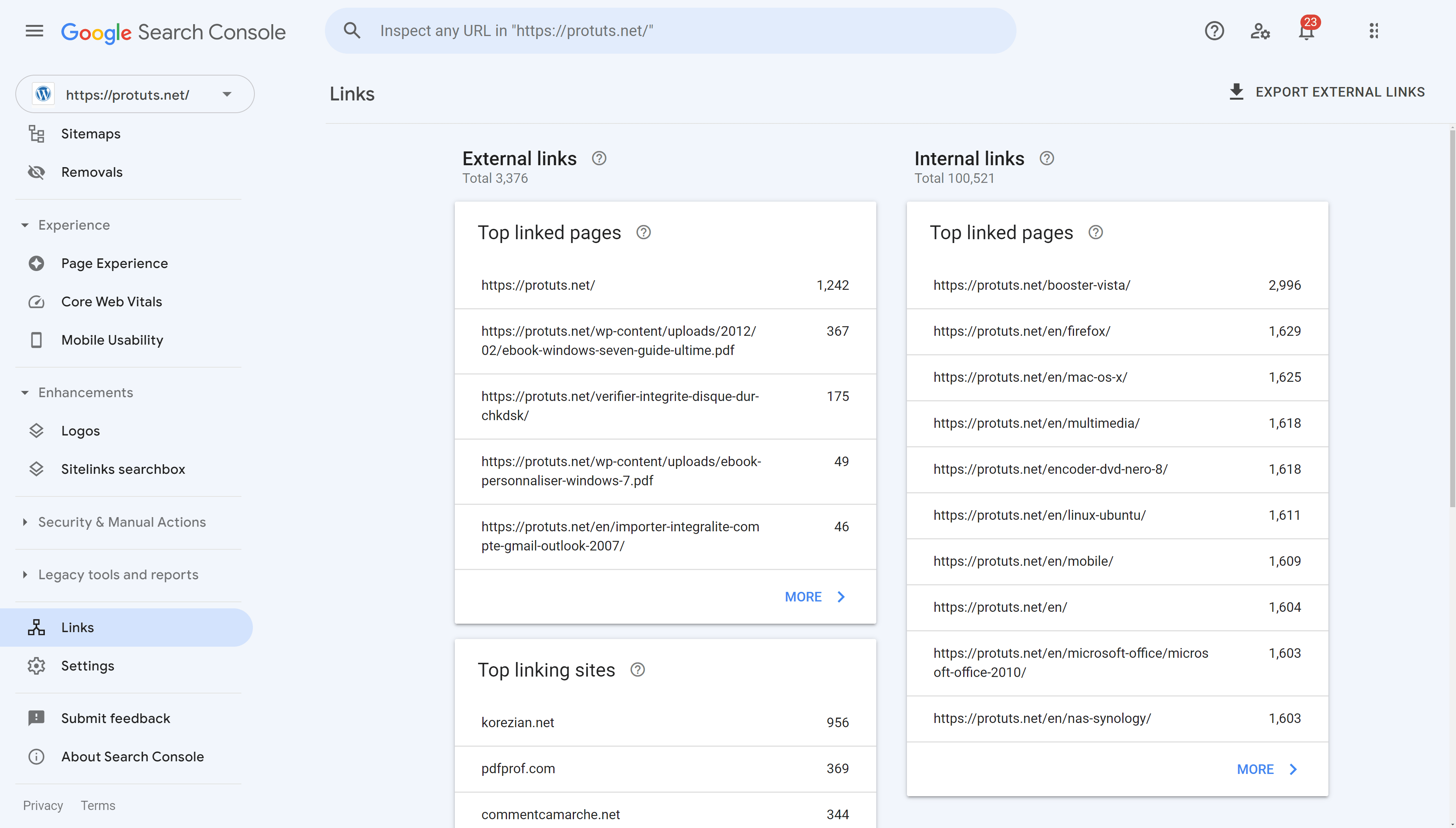
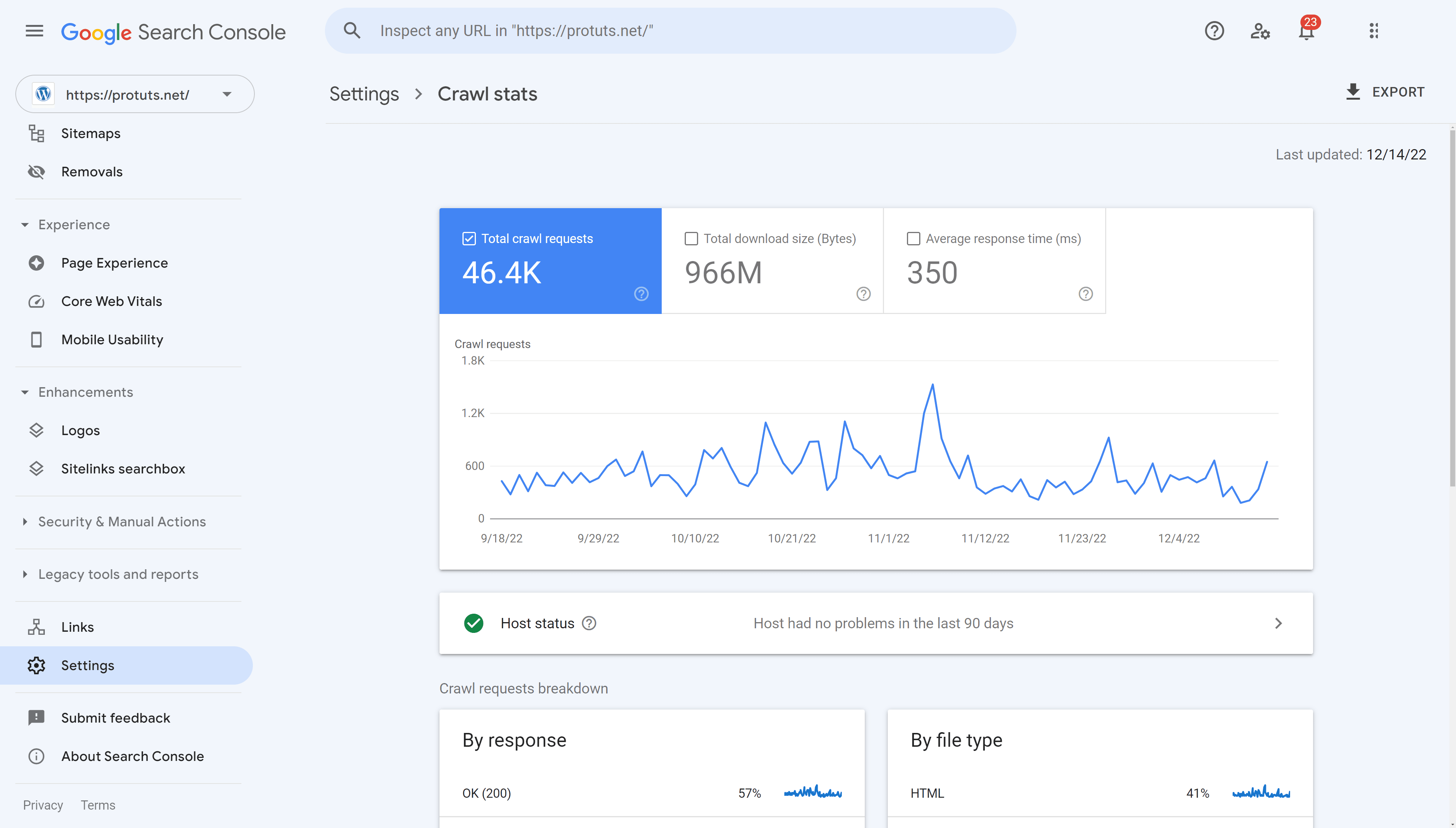
Notifications and warnings from Google
If you are worried that your site may have been penalized by a Google or think your site has been hacked or compromised by a virus, you can check by opening the section in the left-hand menu.Links to Manaul actions and Security issues will appear there.
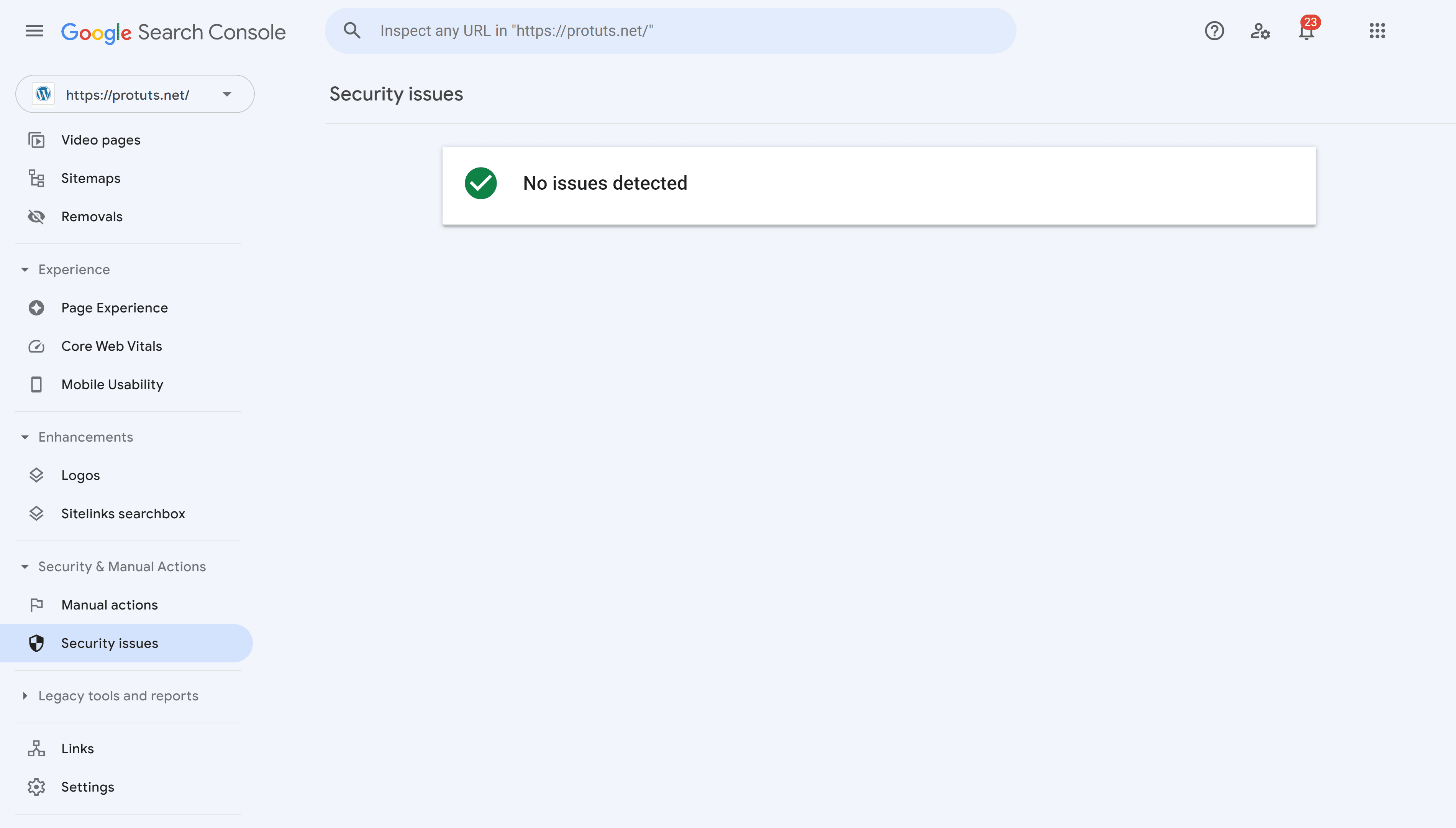
Once you have created your account, you will also receive messages by email from Google if serious issues are detected with your site or its indexation. You can review these messages from within Google Search Console by clicking on the bell icon at the top right-hand corner of the screen.
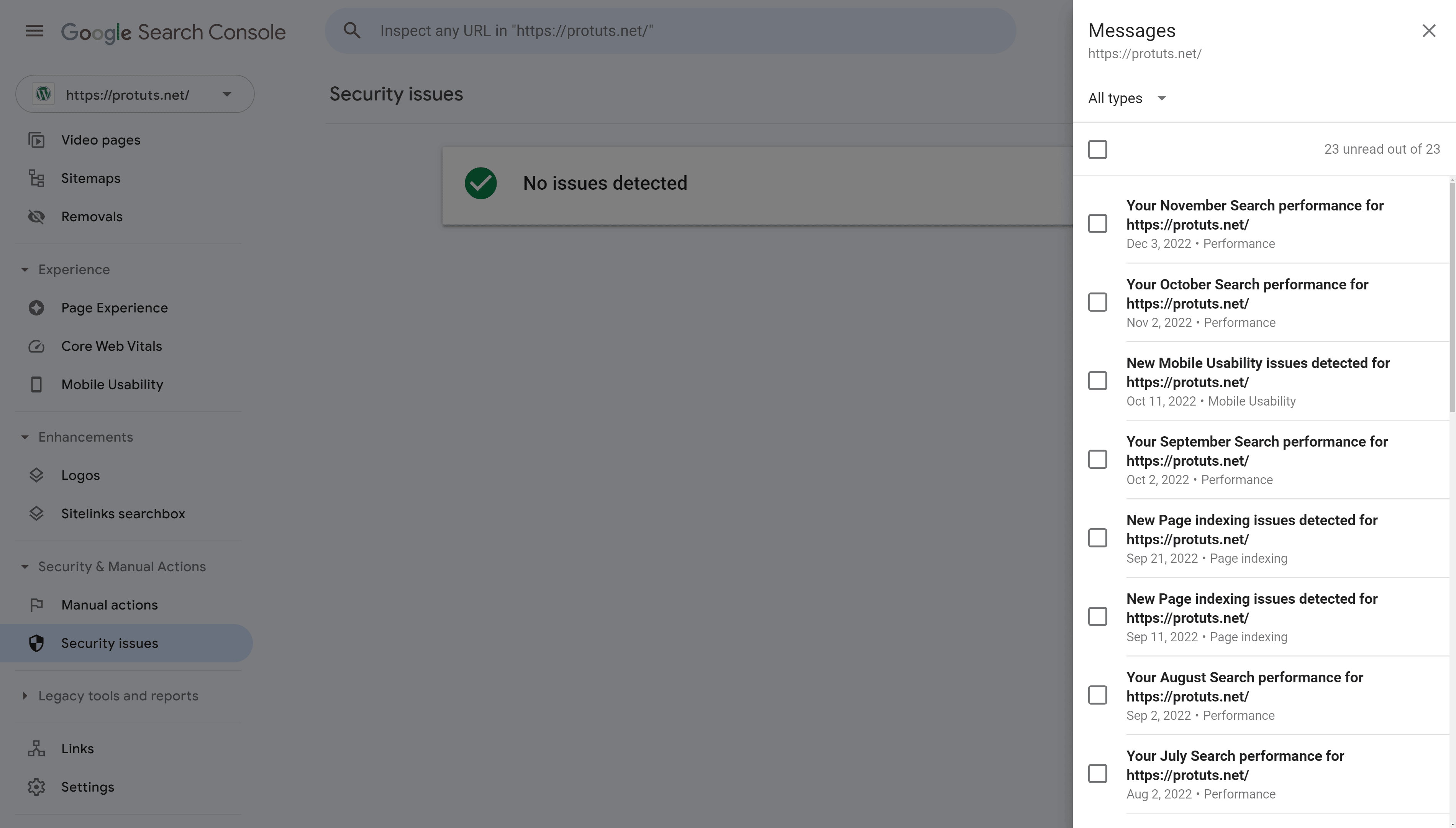
Integrating Google Search Console data into WordPress
You may find it easier to track and analyze Search Console Data from your WordPress dashboard.With SEOPress PRO you can view URL inspection data for any post and import clicks, impressions and average positions from Search Console to view them in lists of Posts, Pages or any other post-type.This allows you to order posts by the number of clicks they obtained over the past 90 days.
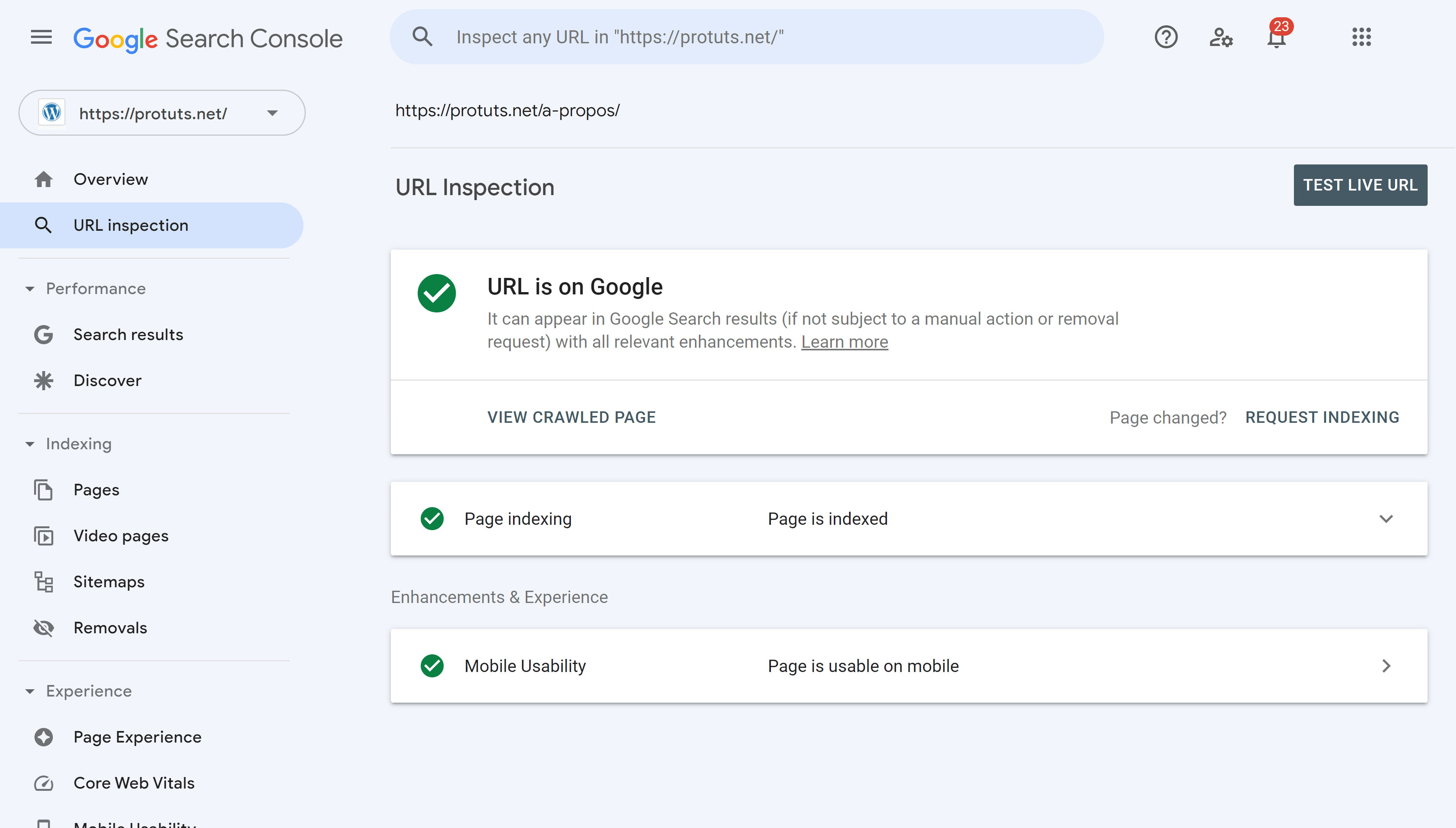
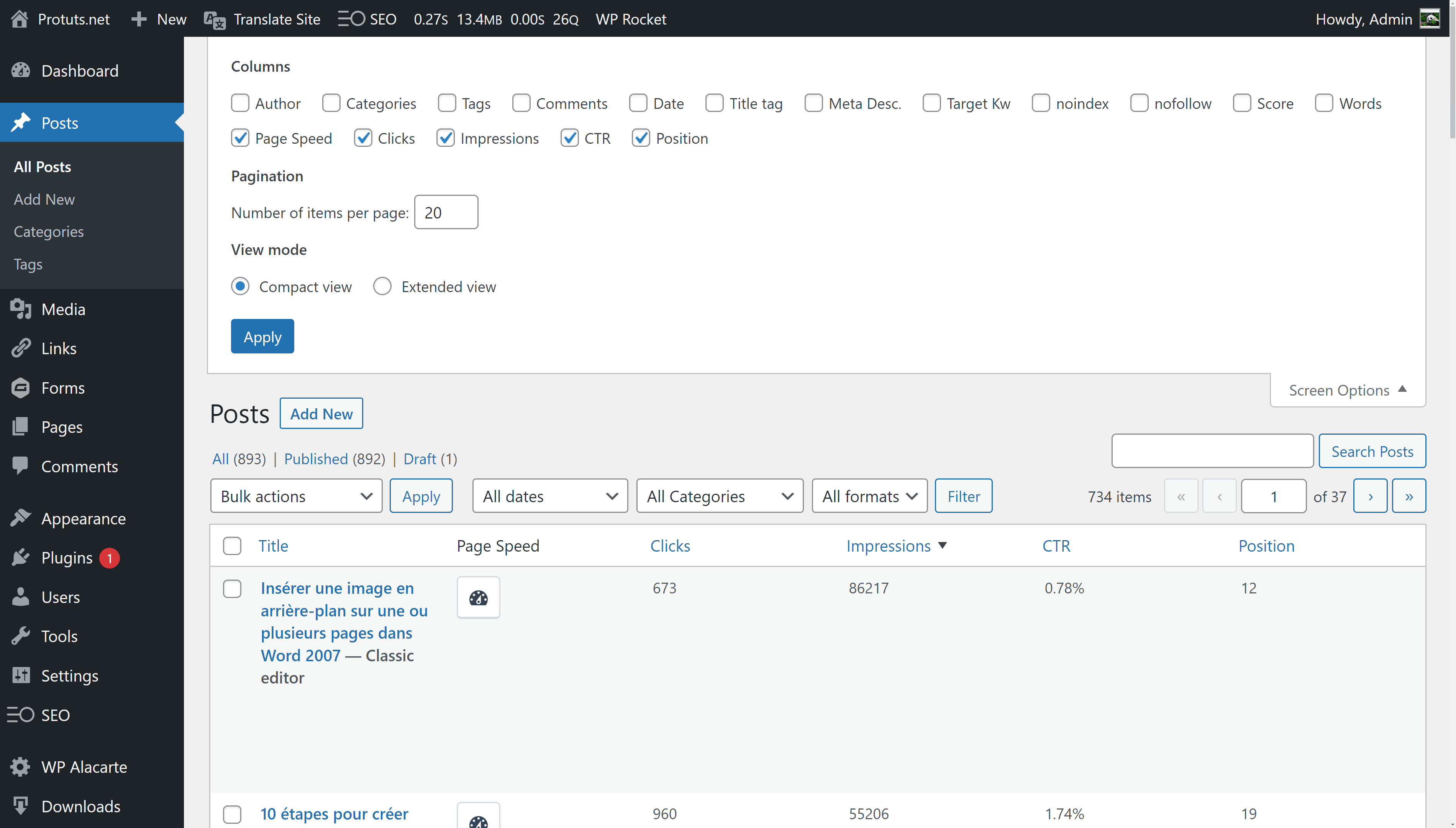
To import Search Console data into SEOPress you need to activate the Google Search Console API from Google Cloud Console, see our easy-to-follow instructions here.
Next steps
Dive into our collection of engaging articles addressing a single topic, offering you a multitude of perspectives on the subject : Maximizing Your WordPress SEO with Google Search Console.
- Track SEO Performance and Find Keywords with Search Console
- Managing WordPress sitemaps in Google Search Console
- How to troubleshoot indexing issues in Google Search Console
- Top Tips for Using Google Search Console with WordPress







